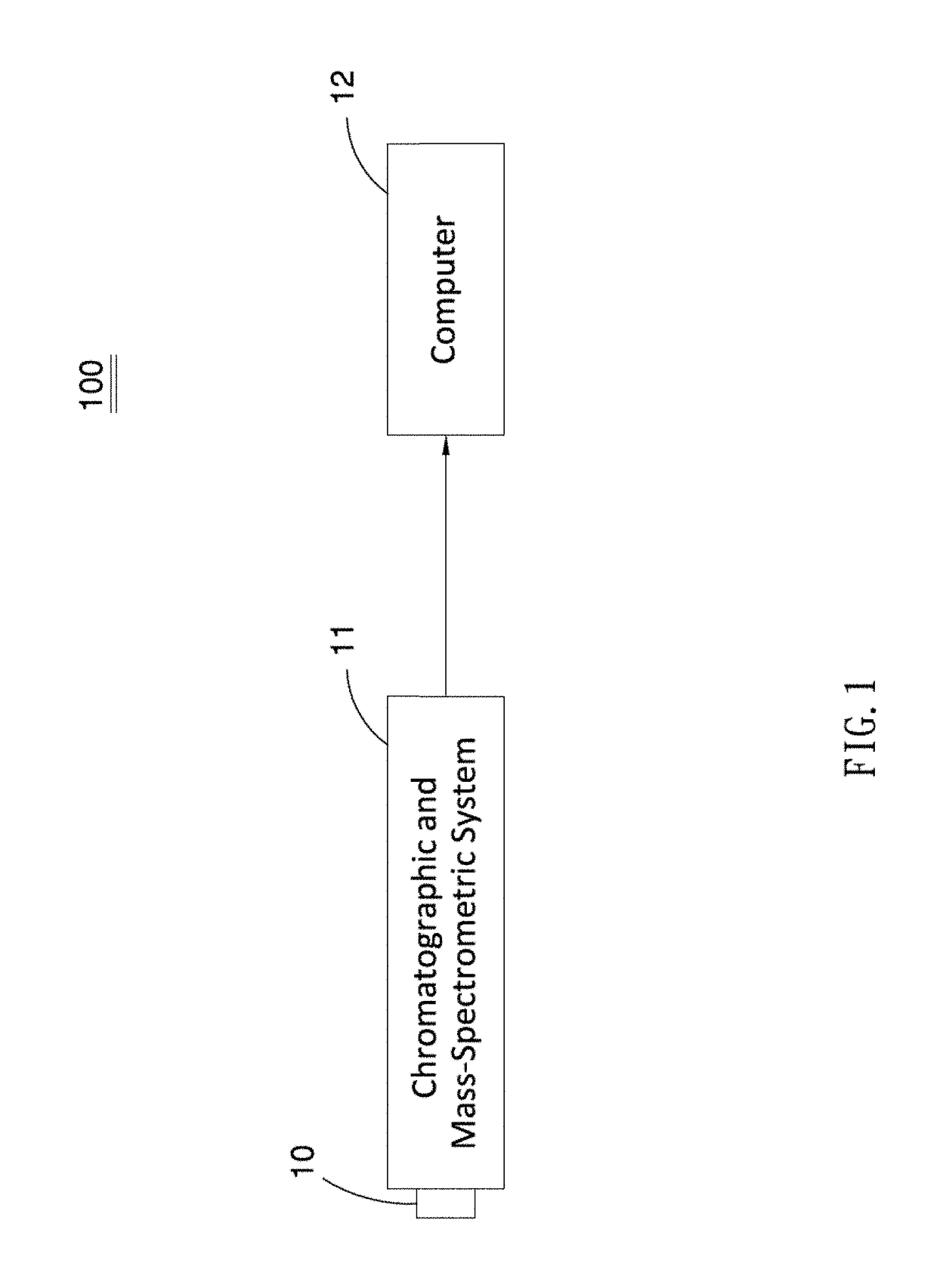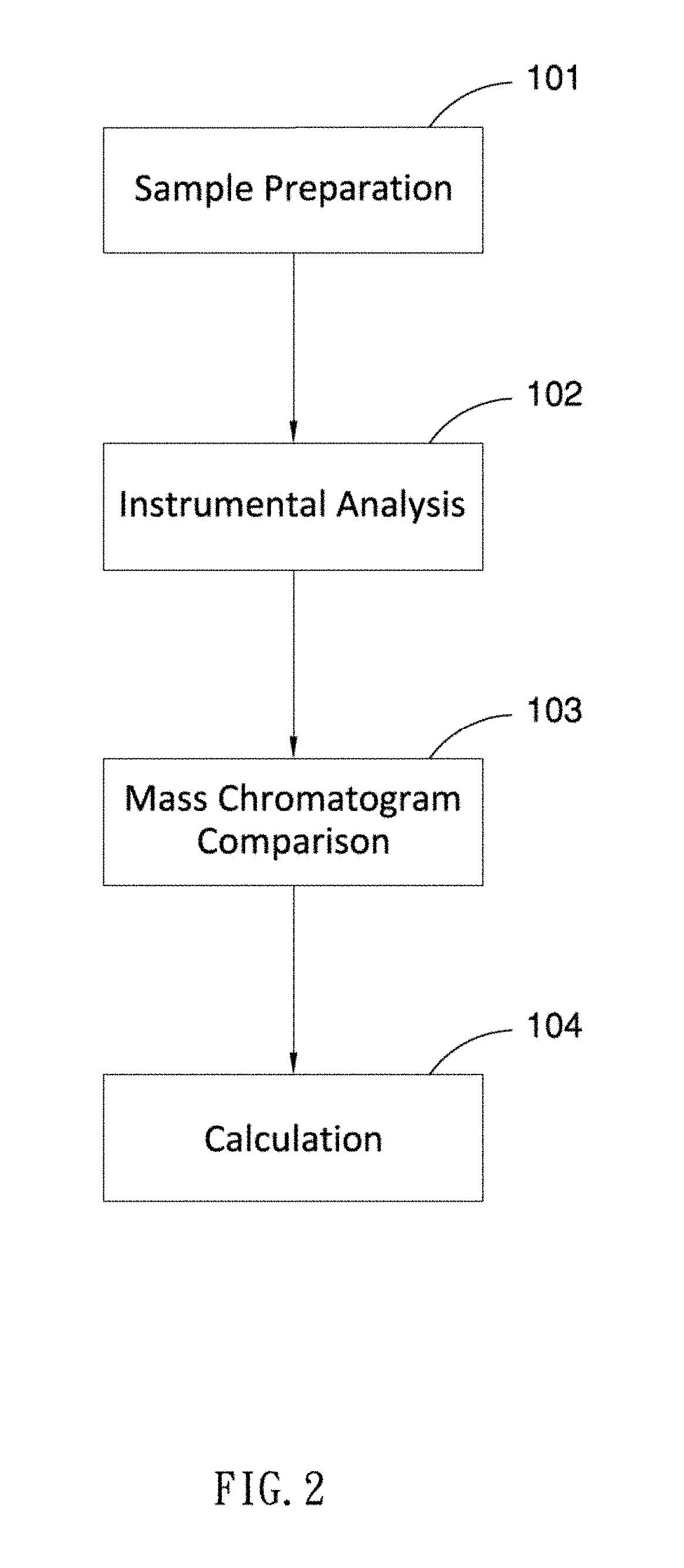Method and system for detecting pesticide residue in argicultural products using mass spectrometry imaging analysis
a mass spectrometry and pesticide residue technology, applied in the field of agricultural products detecting pesticide residues using mass spectrometry imaging analysis, can solve the problems of difficult to perform quantitative analysis of pesticide residues using mass spectrometry, difficult to reduce the time required and difficult to identify pesticide analytes, etc., to reduce interferences and reduce time needed for detecting pesticide residues in agricultural products. , the effect o
- Summary
- Abstract
- Description
- Claims
- Application Information
AI Technical Summary
Benefits of technology
Problems solved by technology
Method used
Image
Examples
Embodiment Construction
[0046]Referring to FIGS. 1 and 2, there is shown a preferred embodiment of a pesticide residue detection system 100 and method. As shown in FIG. 1, the pesticide residue detection system 100 generally includes a chromatographic and mass-spectrometric system 11 and a computer 12 for performing the pesticide residue detection method. As shown in FIG. 2, the pesticide residue detection method generally includes the steps of sample preparation 101, instrumental analysis 102, mass chromatogram comparison 103 and calculation 104.
[0047]Firstly, in step 101, two identical extracts (Sample 1) are prepared, by a QuEChERS method for example, from a first sample to be analyzed, such as fruits, vegetables, etc. One of the two extracts directly serves as a first sample solution 1 with no additives while the other extract is added with at least one pesticide standard (STD) of a known concentration (X) to form a second, spiked sample solution 2. It should be noted that although the first sample sol...
PUM
 Login to View More
Login to View More Abstract
Description
Claims
Application Information
 Login to View More
Login to View More - R&D
- Intellectual Property
- Life Sciences
- Materials
- Tech Scout
- Unparalleled Data Quality
- Higher Quality Content
- 60% Fewer Hallucinations
Browse by: Latest US Patents, China's latest patents, Technical Efficacy Thesaurus, Application Domain, Technology Topic, Popular Technical Reports.
© 2025 PatSnap. All rights reserved.Legal|Privacy policy|Modern Slavery Act Transparency Statement|Sitemap|About US| Contact US: help@patsnap.com



